How the First Gulf War transformed the lives of these Portsmouth veterans
and live on Freeview channel 276
That is the message that veterans are trying to get across on the 30th anniversary of the end of the First Gulf War.
After Iraq accused Kuwait of side-drilling in oil fields and breaking oil production quotas, the country – led by Saddam Hussein – moved his army into the country, with more than 1m troops and hundreds of planes.
Advertisement
Hide AdAdvertisement
Hide AdA coalition with the UK, USA, Saudi Arabia, France, Senegal and more pushed back the Iraqi forces, in what was known as Operation: Desert Storm.
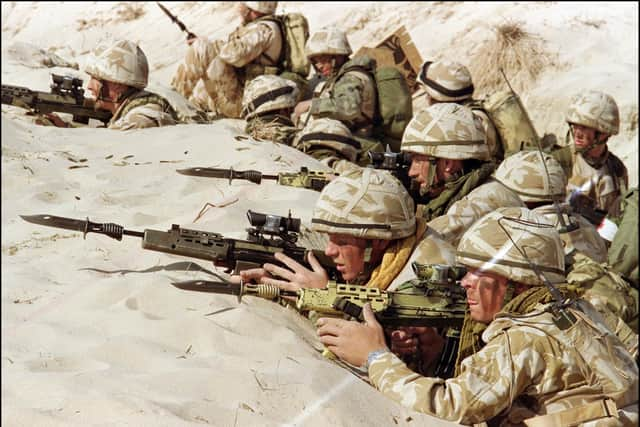

The First Gulf War ran from August 2, 1990, until February 28, the following year. In that time, 292 coalition troops were killed, and a further 1,243 were injured.
It is those who were injured and lived to tell the tale who found their lives transformed by this brief, but violent, conflict.
One such man is Allen Parton, now 62 years old.
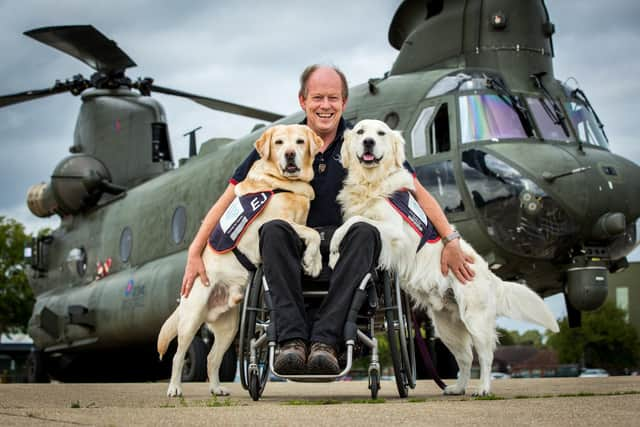

As a result of the injuries he sustained during the Gulf War, his life, and those of his loved ones, were changed forever.
Advertisement
Hide AdAdvertisement
Hide AdAllen, from Cowplain, served on board HMS Glasgow, a type 42 destroyer dispatched to the Persian Gulf in 1991 as part of Armilla patrol - the name given to the Royal Navy’s permanent presence in the area during the 1980s and 1990s.
He remembers setting sail from Portsmouth, waving to wife Sandra at the Round Tower – but remembers nothing from his time in the war.
One of the casualties of the war, Allen suffered memory loss from his injuries and spent five years going through rehabilitation.
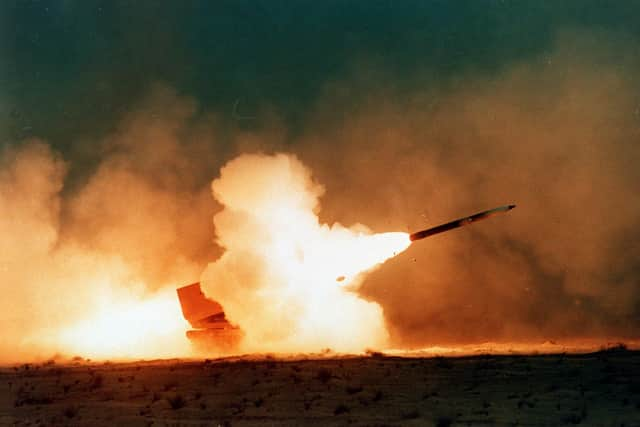

Paralysed and with no recollection of his wife and children, he has spent the past few decades rebuilding his life from scratch.
Advertisement
Hide AdAdvertisement
Hide AdHe said: ‘The hardest thing to do was say goodbye to our families – for my wife, that was the last time she saw the man she fell in love with.
‘We were in the desert doing some work when I was involved in a road traffic accident, although I don’t remember any of this happening. I was there, and yet somehow it wasn’t my fight.
‘When I woke up I was in an MoD medical centre. I was paralysed, I couldn’t read or write, and didn’t recognise my own wife. What’s more, I felt like I had failed in my duty to queen and country.’
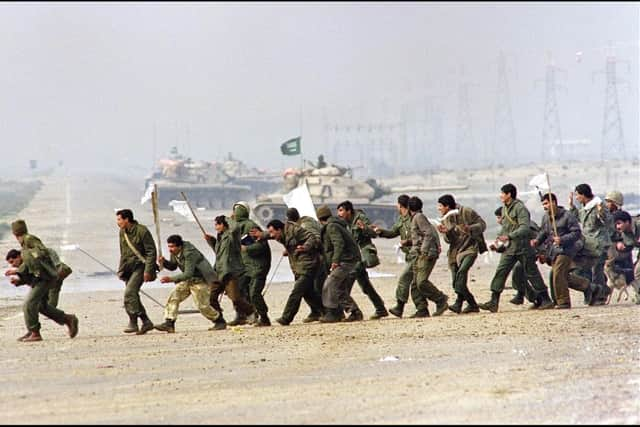

It took a long time for Allen to put the pieces of his life back together, falling back in love with Sandra and learning to love his children, Liam and Zoe, all over again.
Advertisement
Hide AdAdvertisement
Hide AdIn 2002, the couple received special dispensation from Her Majesty The Queen to remarry, despite never actually separating.
Sandra says she has lived with three versions of Allen: the man she first met and married; the ‘angry patient’ she cared for at home; and the man who fell in love with her twice over.
Now, Allen is the founder of Hounds For Heroes, a charity that provides specially-trained assistant dogs to people injured and disabled in the armed forces or emergency services.
While he is living a good life, the damage done from the Gulf War will haunt him for the rest of his life – and the rest of us should never forget the sacrifices made by him and so many other service personnel.
Advertisement
Hide AdAdvertisement
Hide Ad‘When you think about wars, most people tend to forget about the Gulf,’ Allen said.
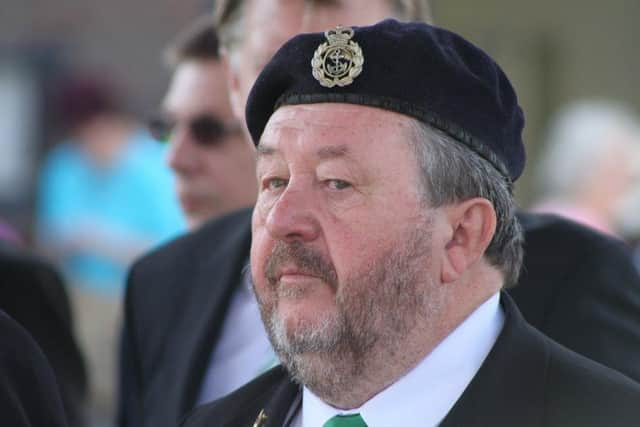

‘It’s not like the world wars, or Afghanistan or Iraq, so flies under the radar – and while I’m okay with that we can’t forget about those who fought in the conflict.
‘We always remember the names on the memorials, but for those of us who survive the war carries on until the day we die.’
Also on the front lines was weapons engineer officer John ‘Joe’ Erskine.
Advertisement
Hide AdAdvertisement
Hide AdJohn, from Cosham, served on board minesweeper HMS Ledbury, which led the entire coalition fleet to the coastline.
Having previously fought in the Falklands War, he found the First Gulf War to be a much more daunting experience.
The 73-year-old said: ‘The fleet followed behind us as we cleared a path towards Kuwait, but it was a tough environment.
‘The water was filled with mines and debris, and sometimes sonar couldn’t pick them up, so you had a bloke on a stool with a pair of binoculars, scouring the water for threats. It was genuinely frightening.’
Advertisement
Hide AdAdvertisement
Hide AdAs the war effort drove the Iraqi forces back to their homeland, oil fields were set alight as part of a ‘scorched earth’ initiative.
It is believed that around 730 oil wells were torched along the coastline, with oil spilling into the water in what was nothing short of an environmental catastrophe.
For John and his comrades, this made working conditions even tougher.
He said: ‘As the oil fields were torched, a thick black smoke rose over the entire coastline.
Advertisement
Hide AdAdvertisement
Hide Ad‘It was the middle of the day and yet you couldn’t see a thing – the soot just caked everything it touched.
‘Not only that, but it became bitterly cold. We were close to the heart of the Persian Gulf and yet all stood around wearing jumpers.
‘It was just so eerie and I’ll never forget what I saw.’
John, who left the navy after 34 years of service in 1997, says the First Gulf War should not fly under the commemorative radar like it does.
He said: ‘There are so many veterans who feel passionately about this – it doesn’t get talked about anywhere near as much as other conflicts, but the experiences are still so fresh in our minds.’
Advertisement
Hide AdAdvertisement
Hide AdAnother man who was on the front lines, albeit in a different capacity, was photographer Nigel Huxtable.
Nigel flew out as part of the newly-created Force Information Organisation (Finfo), which updated British troops on what was happening via a newspaper called the Sandy Times.
Writing in the Royal Naval Associations Circular, he said: ‘Its aim was to keep morale buoyant during the long months of preparation, training and international ‘politiking’ with Iraq, whilst quashing rumours and answering letters from the servicemen and women in theatre.
‘As the days passed the editor and I decided that when the coalition troops were to invade Iraq/Kuwait then it was only honest for us to be there to record the event as eyewitnesses.
Advertisement
Hide AdAdvertisement
Hide Ad‘I had been able to talk my way to accompanying a Royal Signals team – and so was in one of the first vehicles into Iraq at the head of the British army.’
A party to remember
Once the Iraqi forces had either fled or surrendered, the UK ‘Desert Rats' stuck around for the cleanup operation.
Into the harbour at Kuwait City sailed HMS Manchester, to give them a place to shower and some supplies.
On board was Chris Purcell, a leading seaman from Fratton.
As was customary in the navy, alcohol was served to lift the men’s spirits.
Advertisement
Hide AdAdvertisement
Hide AdChris, now 61, said: ‘We didn’t see much action during the war, but on this day there was plenty going on.
‘We welcomed the Desert Rats on board and they got absolutely hammered. It was great fun.
‘They were with us for eight hours before we dropped them off ashore, and we thought that would be the end of that.
‘Suddenly, we get a signal from the Desert Rats to say one of their men is missing; we had a look around the ship and eventually found him passed out in the toilets.
Advertisement
Hide AdAdvertisement
Hide Ad‘When we got him ashore he looked very confused and had no idea where to go – we had a good laugh at his expense.’
It wasn’t all fun and games for the crew of HMS Manchester, however.
When initially sailing into Kuwait City, USA minesweepers in front and astern were hit by mines, meaning the type 42 destroyer was left stranded until a path could be cleared.
The crew also experienced the oil field fires first-hand, watching as black smoke filled the skies in front of them.
First Gulf War timeline
Advertisement
Hide AdAdvertisement
Hide AdMay 30, 1990: Iraqi president Saddam Hussein accuses Kuwait of ‘economic warfare’ through oil overproduction.
July 22, 1990: Iraq begins deploying troops to the border with Kuwait.
August 2, 1990: Kuwait is invaded by around 100,000 Iraqi troops. UN Security Council condemns the invasion.
August 3, 1990: USA deploys navy to the Persian Gulf.
August 8, 1990: Operation Desert Shield launched by the USA to stop Iraq from invading Saudi Arabia.
Advertisement
Hide AdAdvertisement
Hide AdSeptember 14, 1990: UK and France announce deployment of forces.
November 29, 1990: UN decrees that Iraq must withdraw from Kuwait by January 15.
January 17, 1991: Operation Desert Storm is launched.
January 22, 1991: Forced into retreat by air attacks, Iraqi forces set fire to Kuwaiti oil fields.
January 30, 1991: Coalition forces begin land operations in Kuwait and southern Iraq.
Advertisement
Hide AdAdvertisement
Hide AdFebruary 26, 1991: Iraqi forces flee from Kuwait City as a further 10,000 are killed on the ‘Highway of Death’. President Saddam Hussein announces that Iraq will withdraw from Kuwait.
February 28, 1991: Iraq accepts UN resolutions and US President George Bush announces a ceasefire.
A message from the Editor, Mark Waldron
You can subscribe here for unlimited access to Portsmouth news online - as well as fewer adverts, access to our digital edition and mobile app.
Our trial offer starts at just £2 a month for the first two months.
Comment Guidelines
National World encourages reader discussion on our stories. User feedback, insights and back-and-forth exchanges add a rich layer of context to reporting. Please review our Community Guidelines before commenting.